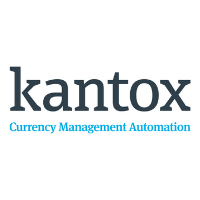The top challenges that will affect your FX risk strategy in 2022
04-04-2022 | treasuryXL | Kantox | LinkedIn |
“The year of predictable unpredictability”, as The Economist calls it. But what challenges lay in store for risk managers in 2022 when it comes to their FX risk strategy?
1. Shifting interest rate differentials across currencies
Let’s start with the first of our challenges that will affect your FX risk strategy in 2022, namely shifting interest rate differentials across currencies. This is the result of central banks reacting to inflation and inflation expectations. This will, in all likelihood, lead to increasing differences between FX rates with different value dates—also known as forward points. Central banks from a wide range of countries have adjusted their short-term interest rates in 2021, and more are set to act in 2022: Chile, Brazil, Czech Republic, UK, Hungary, Poland, NZ, South Africa, and South Korea among others.
Is your company well-prepared to manage those shifts? Is it well-prepared to take advantage of favourable forward points? In the event of ‘favourable’ forward points, for example, when a company sells and hedges in a currency that trades at a forward premium, pricing with the forward rate would allow that company to price more competitively—without endangering its profit margins.
As Toni Rami, Kantox’s Co-founder and Chief Growth Officer says, “most companies fail to take advantage of this opportunity, either because they lack the technology to do it, or because they are not aware of it, or because of both”.
Is it well prepared to protect itself from unfavourable forward points? This is shaping up to be a key concern in 2022. It would be the case, for example, of a company that sells (and hedges) in a currency or in currencies that trade at a forward discount, like a Europe- or a US-based firm that sells, for example, in Brazil.
This company could protect itself by setting boundaries around its FX pricing rate by means of automated and dynamically updated profit-taking and stop-loss orders in order to delay as much as possible the execution of the hedges. Failure to have this mechanism in place will mean:
(a) unnecessary financial losses due to the cost of carry (a key point in 2022 given recent developments in central bank policies)
(b) too much capital tied up in terms of collateral/margin requirements
(c) not enough time at your disposal in order to fine-tune and improve your forecasts (FX surveys consistently show that CFOs and treasurers would like to have more time at their disposal to fine-tune and improve their forecasts)
2. Ongoing pressure on profit margins
Turning to the second challenge, is the ongoing pressure on profit margins. There is a clear need for better, more dynamic pricing systems, as McKinsey surveys consistently show. Does your company have a proper system to price with FX rates? On the face of it, this looks like a simple proposition. It’s not. It requires a system to fetch the appropriate FX rate with criteria in terms of:
(a) sourcing the FX rate;
(b) communicating that FX rate to commercial teams
(c) updating that rate according to time-based or data-driven criteria.
And it also requires a system to create the FX-pricing rules that your business needs. Failure to have these systems in place will likely result in not being able to properly set the pricing markups —per client segment and per currency pair— that your commercial strategy requires and not being able to adequately use the forward rate for pricing purposes.
Take, again, the case of unfavourable forward points, namely a firm that sells and hedges in a currency that trades at a forward discount, or that buys and hedges in a currency that trades at a forward premium. With the proper pricing rules in place, the firm needs to price with the forward rate. That would allow it to avoid unnecessary financial losses on the carry. In 2022, with several EM central banks preparing to further raise short-term interest rates, this is likely to be a critically important element in any FXRM strategy.
3. The uncertain FX markets outlook
Finally, the uncertain FX markets outlook is a reminder of the importance of having a solid FX risk management strategy in place in 2022. According to Citi’s latest Treasury Diagnostics survey, 79% of risk managers have exposure to non-G10 currencies, in many cases unhedged because of costs, liquidity and regulations; 60% of treasurers expect a new client base in emerging markets to be the largest driver of FX-denominated sales growth. Yet 57% of CFOs say they suffered lower earnings in the past two years due to significant unhedged FX risk (worldwide), rising to 77% in EMEA. America: 61%, Asia: 43% (HSBC survey).
This requires automated hedging programs and/or combinations of automated hedging programs. Failure to have these programs in place in 2022 is likely to mean: (a) a high variability in performance, whether it is measured in cash-flow terms or in terms of accounting results; (b) failure to adequately protect and enhance operating profit margins; (c) the possibility that your customer’s FX could turn into your own credit risk if excessive currency volatility forces them to wait for a better exchange rate to settle their bills.
Worried about your FX risk health? Take our free assessment and get a personalised insights report in minutes.










